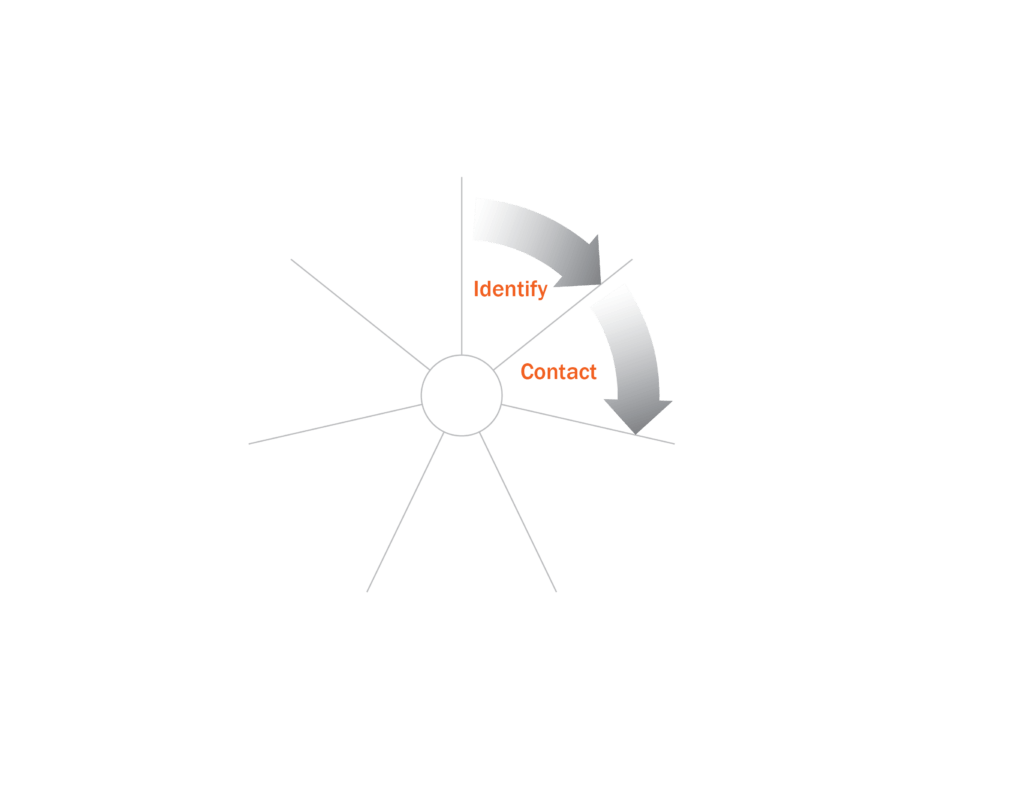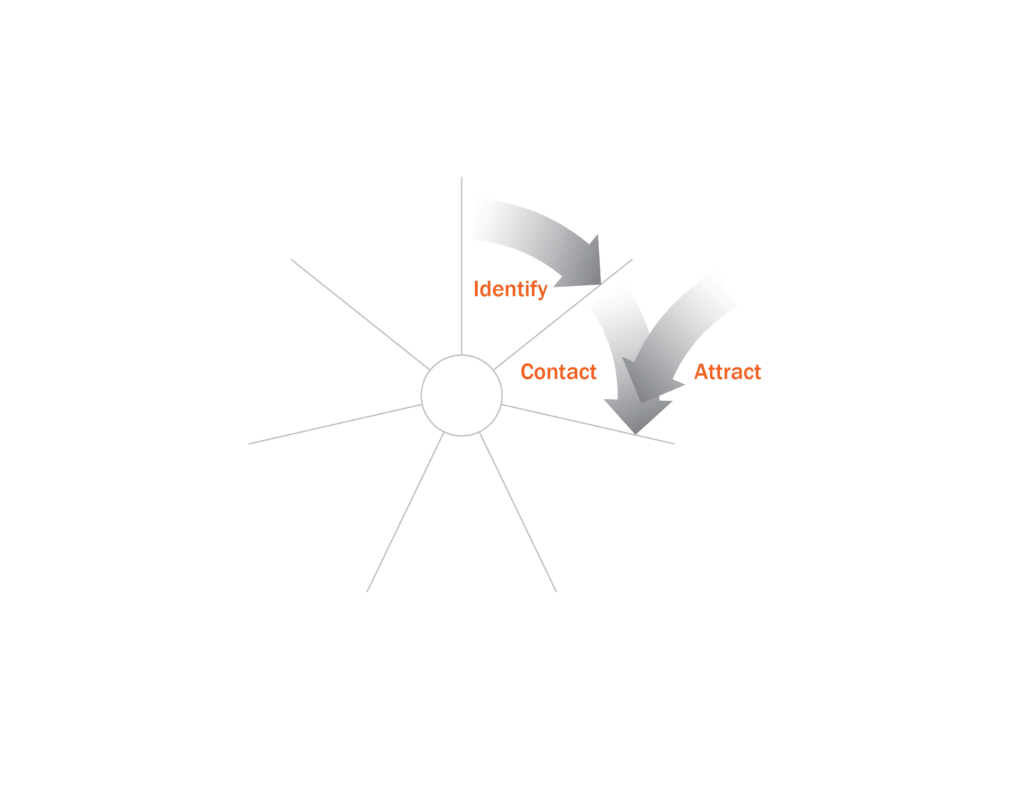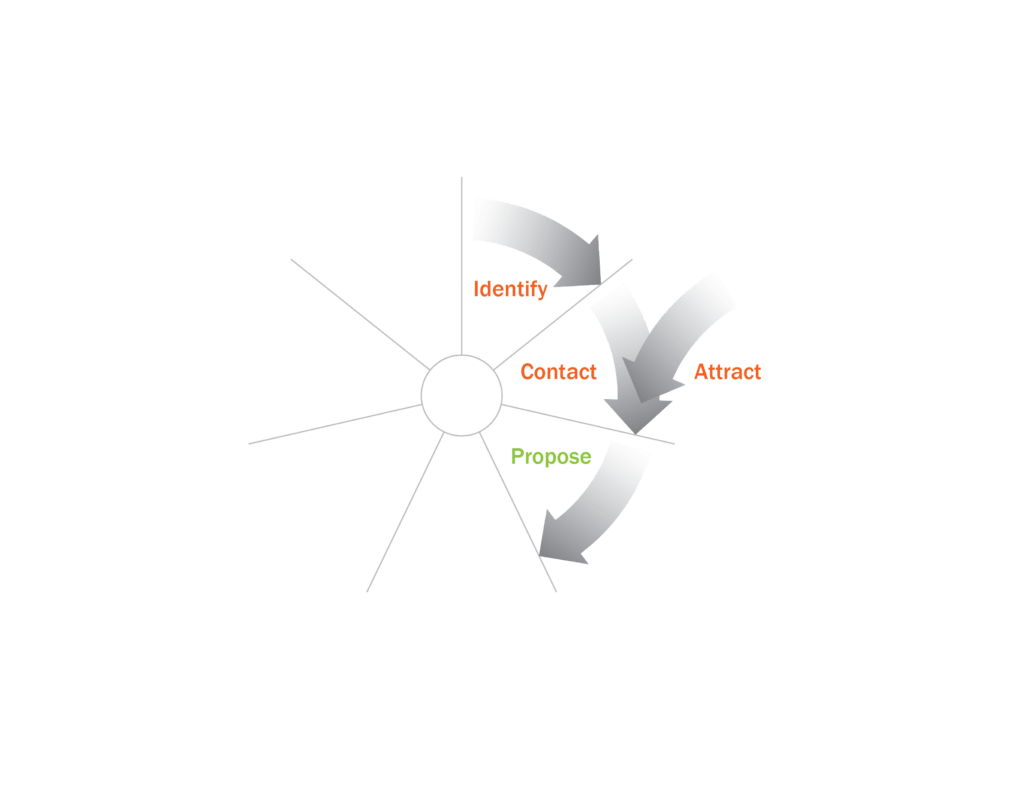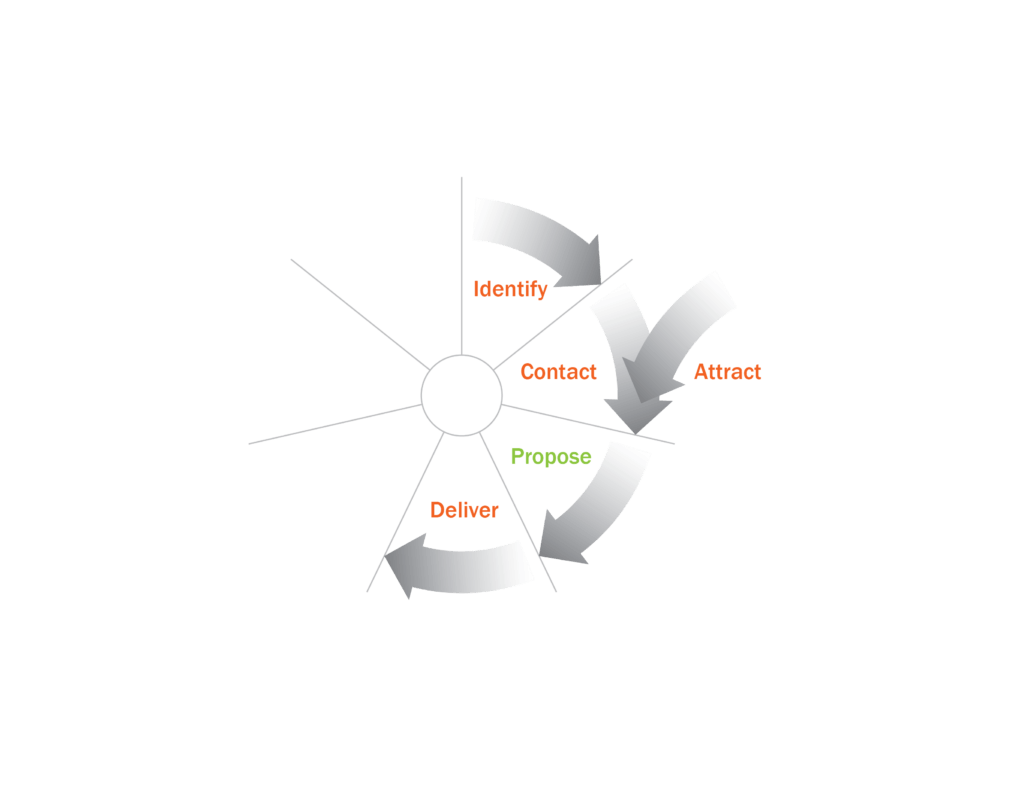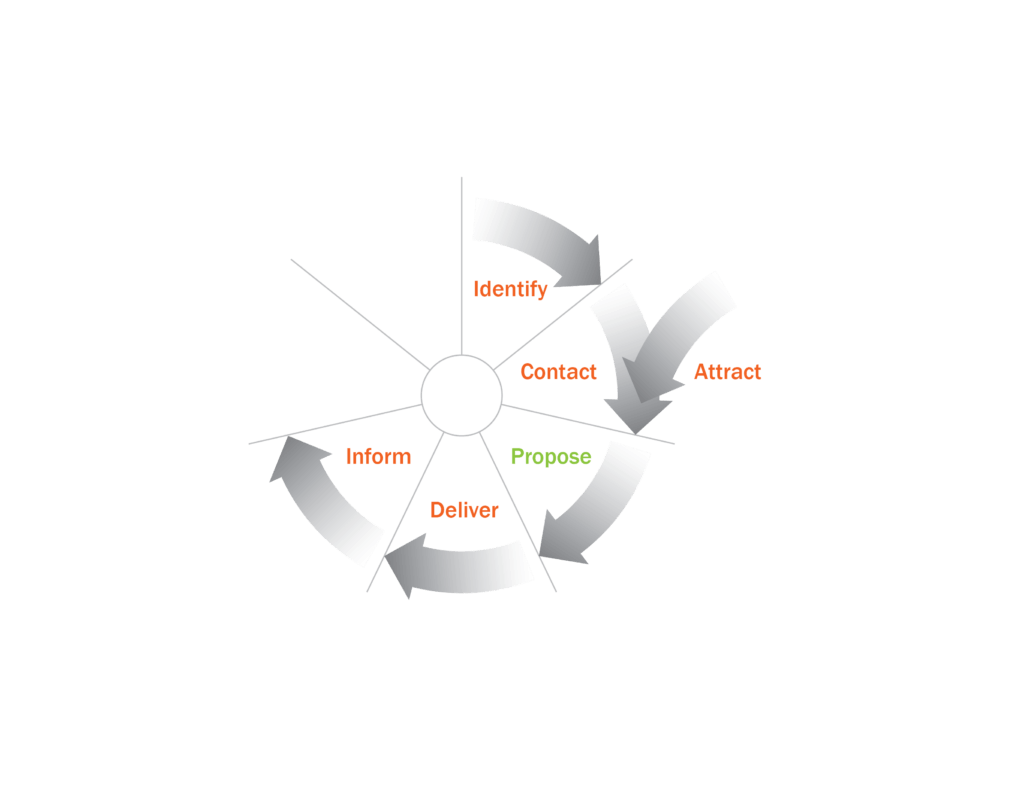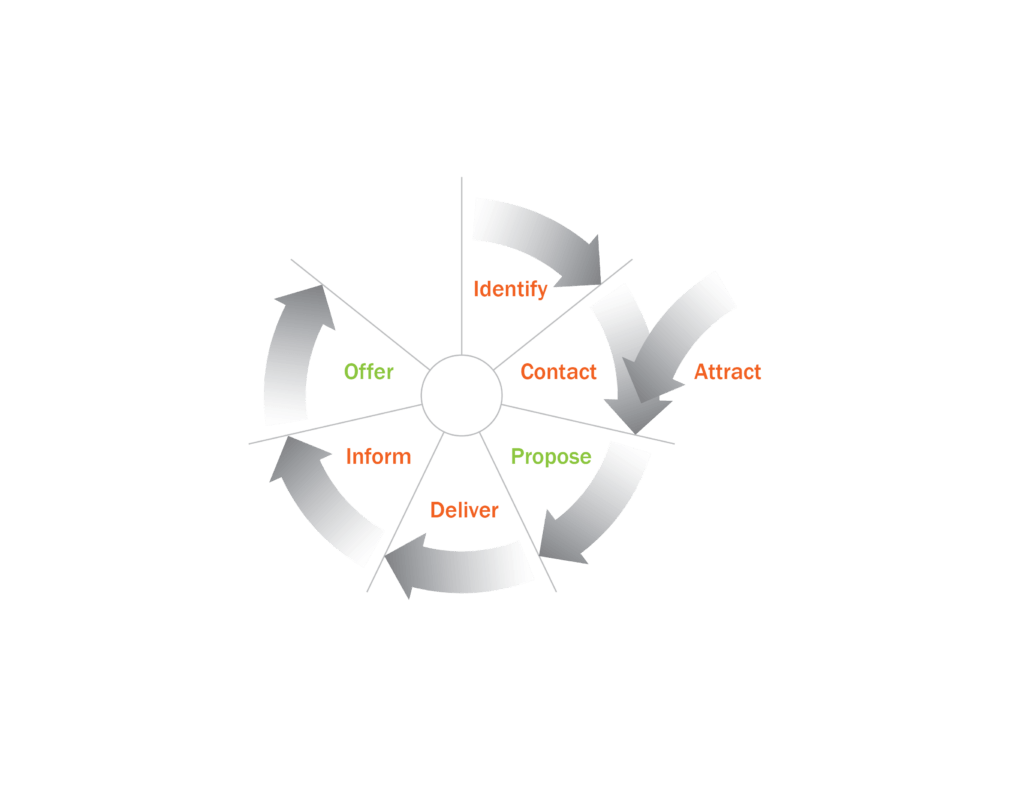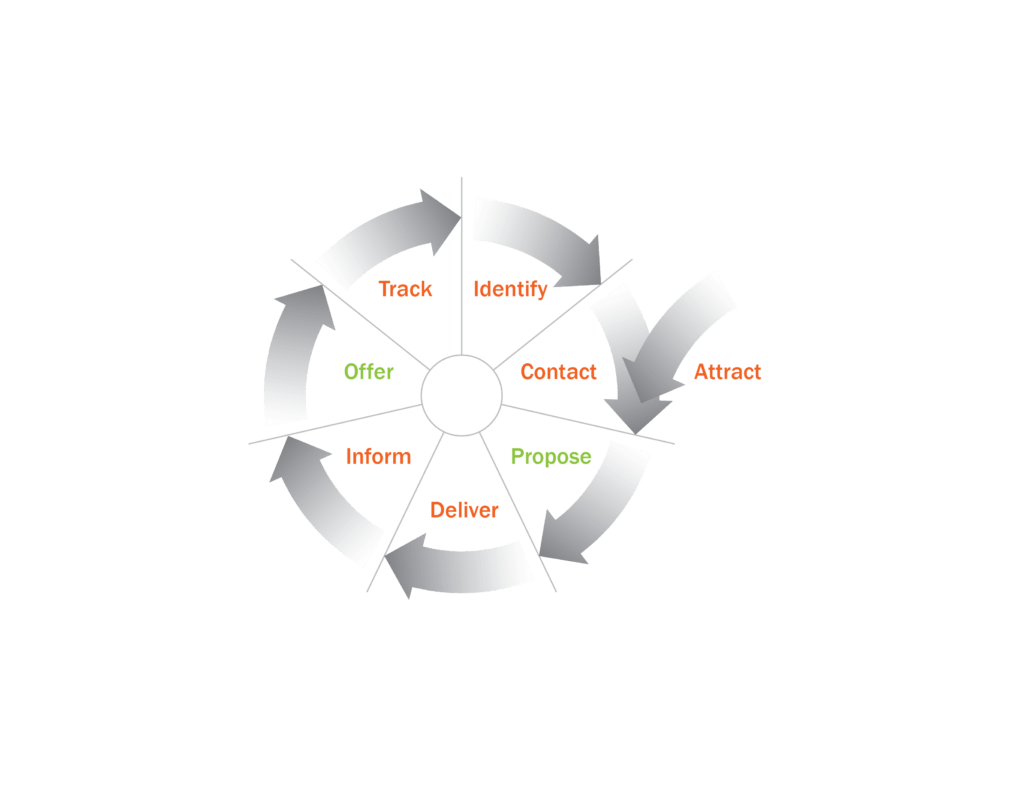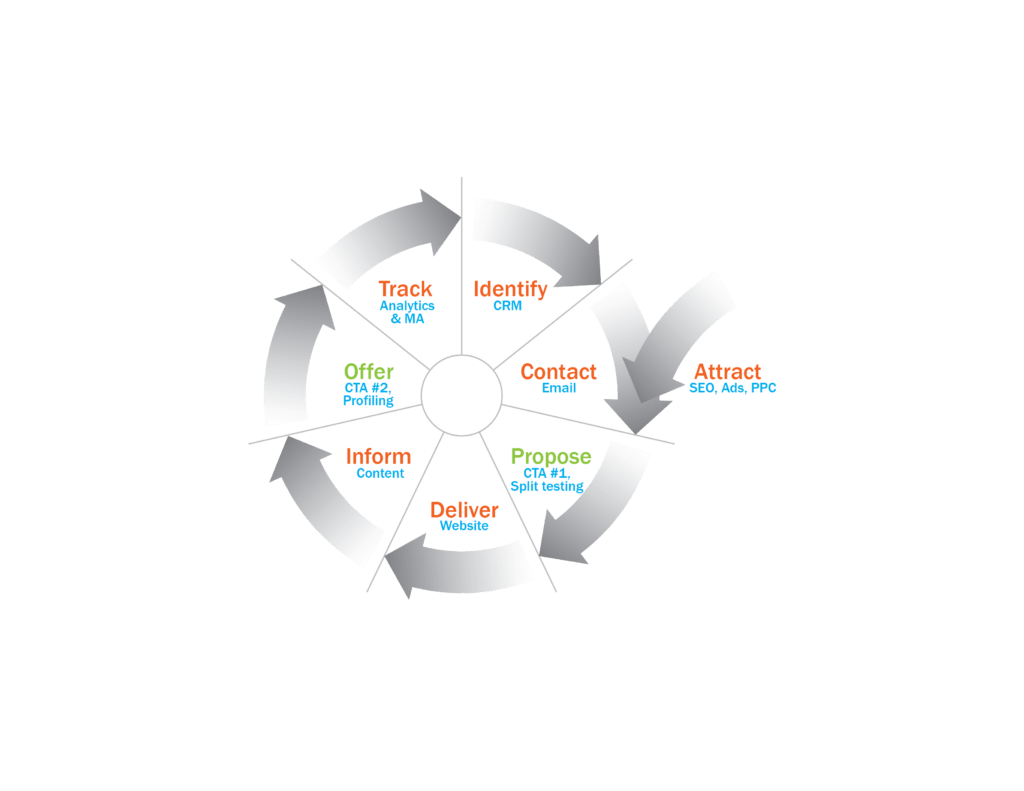Part 3: Nurturing leads in the life sciences; components of a high-performance lead-nurturing ecosystem.
By David Chapin
SUMMARY
VOLUME 8
, NUMER 6
Life science sales cycles can be long. For this and many other reasons (which I’ll summarize below), it is important that we nurture our prospects. While some life science organizations understand lead nurturing well, many don't understand the subtleties involved in creating a highly effective life science lead nurturing "ecosystem." In fact, there are eight distinct activities involved in life science lead nurturing. In this issue I'll describe each activity, and show how they all work together. It turns out that both lead nurturing and lead generation share many of the same activities, so I'll spend some time discussing both. If you're interested in understanding how lead nurturing works or how to improve your own lead nurturing activities, read this issue.
Why should we nurture our life science prospects?
There are many reasons to nurture our life science prospects and clients, which I covered in the previous issue. We nurture our life science prospects because:
- Life science sales are complex and slow
- Buying doesn’t always proceed linearly
- Life science prospects have too much choice
- The customer isn’t always right (in what or how they want to buy)
- Nurturing helps us stratify our prospects
- It takes at least 7 touches to close a sale
- Nurturing is more efficient than finding a new lead
- Our prospects may need us at any time, 24/7/365
- We need to build trust and reputation
- Our competitors are nurturing our prospects
- We need to build our habits of nurturing
- Sales cycles are long and prospects’ memories are short
- Our internal champions need help
- All sales and marketing activities have a half life
- Finally, we nurture because it works: we’ll close more business at higher prices if we nurture than if we don’t
No matter which reasons are the most important, if we’re not nurturing our prospects, we’ll have a harder time achieving the sales velocity we seek. The crucial question is, of course: How should we nurture our prospects? In this issue, I’ll describe each of the eight basic activities of lead nurturing and the technology involved in each. I’ll show how they work together to create a life science lead nurturing ecosystem, one that can build momentum as we spin through the cycle again and again.
I’ll begin this issue by pointing out the similarities between lead nurturing and lead generation.
Lead generation and lead nurturing in the life sciences involve the same activities.
As I covered in the previous issue, lead nurturing is the process of building a relationship with our prospects, one that allows us to help them by guiding their movement from one stage in the life science buying cycle to another. Building this relationship can happen in very simple ways—for example, using an email to offer a prospect a white paper on a topic of interest. Now let me change only one thing about that situation: I’ll switch the touchpoint from an email to an online pay-per-click ad. Suddenly what I’m describing looks more like lead generation than lead nurturing.
In this case there’s only one crucial difference between lead nurturing and lead generation in the life sciences: in lead nurturing we already know something about our target (their email address so we can send them an email), while in lead generation the target is anonymous (so we must attract them using an online ad or search engine optimization—SEO). But except for this one detail, the goals are the same: we seek to help our prospects take the next step in the buying cycle. In addition to similar goals, the basic actions and activities used in lead nurturing are identical to those used in lead generation.
Lead nurturing is the process of building a relationship with our prospects. People can reach all stages of the buying cycle (except the very last stage: “Sold”) and still be anonymous, so our need to guide their movement from one stage to the next doesn’t depend upon our knowing their email address or their name. It will be easier if we do, but just because prospects choose to retain their anonymity doesn’t mean we can’t have a relationship with them.
It’s a little counterintuitive, but we can develop a relationship with someone who visits our web site anonymously, someone whose name and email address we do not know. We can (and should) nurture the life science prospects we know and we can (and must) nurture the life science prospects that are anonymous to us. In both cases, we’re establishing a relationship with them to help them progress along the different steps in the buying cycle. In the last issue, I pointed out that the very last step in the buying cycle (closing a sale) meets this definition and is also a form of nurturing.
In this issue I’ll be using the term “lead nurturing,” but please remember that in the life sciences, lead generation involves the same basic set of activities as lead generation.
The eight basic activities in the lead nurturing process for organizations in the life sciences.
There are eight basic activities in the life science lead nurturing process. These form a cycle, and organizations travel through this cycle iteratively, again and again. There are many ways that prospects can enter the cycle and once they do, we seek to learn more and more about them. Let’s examine these life science lead nurturing activities one at a time.
Identify: Activity 1 in the life science lead nurturing cycle.
Creating a lead nurturing campaign in the life sciences begins with identifying the specific contacts or the type of contact we wish to nurture. It could be that we know the names or emails of specific individuals and want to build a lead nurturing campaign—for example, “I want to mine our database of prospects and target everyone who works in Paris for a lab that uses LC/MS/MS equipment.” Or it might be that we don’t know their individual information—for example, “I want to create a lead generation campaign that will target everyone who lives in Great Britain and works for a small biotech company.”
The technology used in this activity can vary widely—from a stack of business cards to a spreadsheet, a custom database or a CRM—depending upon the size and sophistication of the sales and marketing departments.
Contact: Activity 2 in the life science lead nurturing cycle.
The next step in a lead nurturing campaign in the life sciences involves outreach to the selected prospects, through one of several methods. When we know their email address, we can use an email program to contact them. If we know that they’re going to be attending a particular trade show, we can reach them in a variety of ways, such as a door hanger (hanging a bag containing lead nurturing information on the door of a hotel room). If we know their name and physical address, we can use direct mail, which can be surprisingly effective because each of us tends to receive much less direct mail than email; it stands out exactly because it is so rare these days.
There are many ways to nurture our prospects or clients in the life sciences, and each depends, in part, upon what we know about them. The methods of contact I’ve been discussing here work when we know specific contact information about our prospects. When we don’t know this, we’ll use an alternate step in the process, which is…
Attract: Activity 3 in the life science lead nurturing cycle.
Attraction is the activity designed to get us noticed by a prospect. Attraction can take many forms; the most common methods include search engine optimization (SEO), pay-per-click ads (PPC) and traditional lead generation activities such as print ads and trade show exposure. Attraction is typically used when we don’t know any contact details about an individual in the life sciences.
These two activities (Contact and Attract) are alternatives. For any one individual in the life sciences, we’ll use either one activity or the other each time we go around the lead nurturing cycle, building momentum.
Promise: Activity 4 in the life science lead nurturing cycle.
If we’re going to develop a relationship with a life science prospect, each of the previous two steps (Contact and Attract) requires that the prospect take some action in response to our offer, or Call to Action. Calls to Action can vary widely, such as Please visit our web site, or Click here to watch this video, or Fill out and return the postage-paid postcard. Some actions that we’re asking our prospects to take allow them to remain anonymous (Visit our web site); some require that they identify themselves (Fill in and return this postcard). In either case, there is an implied promise: the prospect will receive something of value if they take action by engaging with us.
Deliver: Activity 5 in the life science lead nurturing cycle.
The Deliver phase is when we fulfill the promise we made with our Call to Action—by delivering something of value to our life science prospects. This value can take many forms: an experience, a white paper, a discount coupon, a chance to win a drawing, etc. It might be informational; it might be experiential. For the typical lead nurturing program, our web site is the delivery mechanism and the value is some form of unique thought-leadership. When we’re using our web site to deliver value, our site must be designed so that the user experience (UX) is compelling and engaging, which means it must have clear navigation and effective design. Of course, there are other ways to deliver value to our life science prospects—for example, Bring this certificate by our trade show booth to register for a drawing for a free iPad.
Inform: Activity 6 in the life science lead nurturing cycle.
The Inform step is where the rubber meets the road. For high-performing lead nurturing campaigns using our web site as the delivery mechanism, the information or experience on our site should be designed to support the transition from one phase of the buying cycle to the next. As I pointed out in the past issue, this means that it should educate those life science prospects in phase 1 (pre-Contemplation), inspire those life science prospects in phase 2 (Contemplation), and reassure those life science prospects in phase 3 and 4 (Planning and Action).
For the typical life science lead nurturing ecosystem, the value provided in this activity takes the form of some kind of prized (or at least interesting) life science content, such as white papers, video, self-assessments, etc.
It’s not yet possible to have our web site (all by itself) intuit which phase of the buying cycle a visitor occupies and direct them to the appropriate section of the site. If we’re going to segment buyers by phase, a specific call to action has to direct them to a specific section of the site, where content targeted to their phase would reside. This call to action would be linked back to a specific record in our CRM, where the prospect’s phase in the buying cycle is identified. In sophisticated systems, this identification can be teased out of prospect’s behavior on previous visits to the web site, but in most situations, this phase will be determined and entered into the CRM by a salesperson.
Most lead generating ecosystems are not this sophisticated, so content that can educate, inspire and reassure must all be available on our site. Prospects in different stages will naturally be drawn to different types of content, and titles can be used to help them find the most appropriate content, for example:
- “Comparing specificity and accuracy among different cell sorting technologies.” (This would be strictly educational content for those in Phase 1. The visitor might have the following reaction: “Now I understand the differences between these different options.”)
- “Realizing productivity gains by improving flow rates in cell sorting systems.” (This inspirational content would be for those in Phase 2; “Hey, I see how my life could be a lot easier if I had a faster system.”)
- “Three case studies of implementing new cell sorting systems; lessons learned.” (This reassuring content would for those in Phases 3 and 4; “I see that others have made this transition and I’m now reassured that I’ll be able to minimize disruption in my workflow.”)
I trust it’s obvious that at this stage of the process, value must be provided to the visitor. If value is not provided, prospects will learn quickly that they can’t trust the offer we made to them in the previous step, and we’ll lose credibility. The total amount of content available from all sources to our prospects is rising dramatically, so to stand out, our content must provide real value and be unique. We’ll only get noticed if we provide more insight and less run-of-the-mill content.
Offer: Activity 7 in the life science lead nurturing cycle.
In this lead nurturing stage we actively try to get our prospects to step forward and deepen their relationship with us. We do so by making an offer, so this is the second Call to Action in the life science lead nurturing cycle. One of the most important Calls to Action we can employ at this point is to ask the prospect to surrender their anonymity, typically by giving us their email address and/or name. Now, we’ve all visited a web site that asked us to submit an email address—and yet we declined to do so. Why? The reason is simple: what was offered to us wasn’t worth the cost—a relationship involving a deluge of emails that we worried would follow us forever. To make this offer compelling and to encourage our prospects to deepen their relationship with us, we must offer significant value in return for the life science prospect’s loss of privacy.
The amount of information we ask for during this activity will have a large effect on the percentage of prospects that actually choose to provide any information. The more information we ask for, the fewer the number of people who will provide the information; yet extensive information is exactly what we seek. There are two solutions to this conundrum. The first is simple: provide opportunities for prospects to provide more information than is strictly required, in the hope that they’ll volunteer additional information. The second is more sophisticated: technology solutions enable us to “progressively profile” individuals. Progressive profiling is a system that tracks the information already known about a particular life science prospect and augments that by asking for new information each time. In practice this means that we first ask for a name and email address, the next time we might ask for their title, the next time we might ask for their company name and size, and so on. In this way we are able to build a complete profile of a life science prospect, in stages, without requiring an onerous amount of detail at any one time.
Track: Activity 8 in the life science lead nurturing cycle.
Once a life science prospect has given us their email address, we can use the technology embedded in our web site to “drop a cookie” on their browser and link the cookie to their personal information. In this way, we can track their behavior when they return to our site. If we’re using the right technology, we can track what pages they visit and where they place their cursor on the page. We can measure how long they stay on any page and when they leave or return, among many other actions. The technology used for tracking can vary widely. At the most sophisticated level, life science companies use a variety of Marketing Automation software linked to both a CRM and an email program.
The other function that can occur during this activity is lead scoring. This enables life science organizations to assign a score to each action a prospect might take, such as opening an email, clicking through to a web site, filling out a form on the web site or downloading some content. Establishing a score for each activity enables us to build a total score for any one individual, which in turn allows us to monitor their score over time. The most common use for this score is to assign follow-up actions or workflows when a score reaches a particular threshold, for example, When a score reaches 35, we’ll send them a link to a series of white papers, one week apart. When their score reaches 60, we’ll have the appropriate salesperson reach out and call them.
If our life science lead nurturing program is working well, then If a prospect has responded to our second Call to Action, we’ve deepened our relationship with the prospect and our lead nurturing program is working well. We now know a little (or a lot) more about them, and we can decide whether to include them in future nurturing activities by returning to the first activity (Identify) in our lead nurturing cycle. In this way the cycle is repeated iteratively, and momentum builds as the flywheel spins around again and again.
Buying cycles in the life sciences can be long—years in some cases. Often, a single circuit around the life science nurturing cycle will not be enough to move a prospect from one stage of the buying cycle to the next. So we repeat the process, at regularly spaced intervals. The last step (Track) feeds information back into the first step of the process, where the prospects that need nurturing are identified and the cycle is started again.
Figure 9: The lead nurturing cycle. There are eight main activities in the process of nurturing our clients, forming the lead nurturing cycle. Successful organizations typically lead prospects around this cycle regularly. The tools and technology typically used is shown next to each activity.
Conclusion
A high-performance lead nurturing ecosystem has eight main activities, which are:
- Identify
- Contact
- Attract
- Promise
- Deliver
- Inform
- Offer
- Track
The technology used in each activity differ and will vary over time as we increase the sophistication of our life science lead nurturing ecosystem. These activities form a cycle, and we traverse the cycle with our prospects again and again, going around and around, building momentum as we go.
In my next issue, I’ll outline the three basic challenges that marketing and sales team face when trying to create and run an effective lead generation ecosystem as well as the skills and abilities they must possess. I’ll also outline some examples of this lead generation ecosystem in action. And in future issues I’ll describe the four stages through which organizations evolve as they build a high-performance life science lead nurturing ecosystem and provide an assessment that will reveal both where you are in this evolution and what you should focus on to improve your efforts.
The Marketing of Science is published by Forma Life Science Marketing approximately ten times per year. To subscribe to this free publication, email us at info@formalifesciencemarketing.com.
David Chapin is author of the book “The Marketing of Science: Making the Complex Compelling,” available now from Rockbench Press and on Amazon. He was named Best Consultant in the inaugural 2013 BDO Triangle Life Science Awards. David serves on the board of NCBio.
David has a Bachelor’s degree in Physics from Swarthmore College and a Master’s degree in Design from NC State University. He is the named inventor on more than forty patents in the US and abroad. His work has been recognized by AIGA, and featured in publications such as the Harvard Business Review, ID magazine, Print magazine, Design News magazine and Medical Marketing and Media. David has authored articles published by Life Science Leader, Impact, and PharmaExec magazines and MedAd News. He has taught at the Kenan-Flagler Business School at UNC-Chapel Hill and at the College of Design at NC State University. He has lectured and presented to numerous groups about various topics in marketing.
Forma Life Science Marketing is a leading marketing firm for life science, companies. Forma works with life science organizations to increase marketing effectiveness and drive revenue, differentiate organizations, focus their messages and align their employee teams. Forma distills and communicates complex messages into compelling communications; we make the complex compelling.
© 2024 Forma Life Science Marketing, Inc. All rights reserved. No part of this document may be reproduced or transmitted without obtaining written permission from Forma Life Science Marketing.

